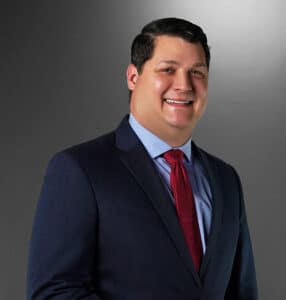When it comes to maintaining knee stability and mobility, one cannot overstate the importance of ACL strengthening exercises. The Anterior Cruciate Ligament (ACL) is a crucial element in the knee that aids in stability and prevents the shin bone from sliding out in front of the thigh bone. Injuries to the ACL are common, especially among athletes, and can lead to severe pain and limited mobility. This guide aims to provide a well-rounded understanding of ACL exercises, torn ACL exercises, and ACL tear exercises without surgery that can aid in a quick recovery and long-term knee health.
Table of Contents
Understanding the ACL
The ACL, or Anterior Cruciate Ligament, is a ligament located in the middle of the knee. Ligaments are robust bands of tissue that connect bones to each other. In the case of the ACL, it prevents the shin bone from sliding out ahead of the thigh bone. ACL injuries can range from mild sprains to complete tears and are often seen in individuals involved in sports or activities that require rapid acceleration or deceleration, sharp turns, or sudden changes in direction.
The Importance of ACL Strengthening Exercises
Whether you’ve recently undergone ACL surgery or are looking to prevent future ACL injuries, incorporating ACL exercises into your fitness routine is a must. ACL strengthening exercises aim at strengthening the muscles around the knee, notably the quadriceps, and hamstrings, to support the ACL and improve joint stability and mobility. These exercises can be particularly beneficial for individuals recovering from an ACL injury or surgery, helping to regain strength and movement without causing further damage to the ACL.
Getting Started with ACL Strengthening Exercises
Before jumping into the deep end of ACL strengthening exercises, it’s vital to start slow, especially if you’re recovering from an injury or surgery. Avoid exercises that put excessive strain or weight on your knee initially. Instead, focus on gentle movements that help improve muscle strength and extend the range of motion. Here are some beginner-friendly exercises to get you started:
1. Heel Slides
Heel slides are an excellent exercise for extending the knee without bearing any weight. To do this exercise:
- Sit on the floor with your legs outstretched.
- Slowly bend the injured knee, sliding your heel across the floor toward you.
- Slide the foot back into the starting position.
- Repeat this movement ten times.
2. Isometric Quad Contractions
This exercise helps strengthen the quadriceps muscles in your thigh. Follow these steps:
- Sit on the floor with your injured leg extended and your other leg bent.
- Contract the quadriceps of your injured knee slowly without moving the leg.
- Hold the contraction for ten seconds, then relax.
- Repeat this exercise ten times.
3. Prone Knee Flexion
Prone knee flexion is a great exercise that can be done while lying on your stomach. Here’s how to do it:
- Lie on your stomach with your legs straight.
- Bend your injured knee and bring your heel toward your buttocks.
- Hold the position for five seconds, then relax.
- Repeat this exercise ten times.
ACL Strengthening Exercises for Intermediate Level
Once the swelling in your knee has subsided, and you can comfortably stand on both legs, it’s time to level up your ACL strengthening exercises routine. Here are some exercises to try:
1. Passive Knee Extensions
Passive knee extensions help stretch out your hamstrings. You’ll need two chairs of equal height for this exercise. Here’s how to do it:
- Sit in one chair and place your heel on the seat of the other chair.
- Relax your leg and let your knee straighten.
- Rest in this position for 1 to 2 minutes several times a day.
2. Heel Raises
Heel raises are performed while standing and help strengthen your calf muscles. Follow these steps:
- Place one hand on the back of a chair for balance.
- Lift your heels slowly, standing on your tiptoes.
- Hold the position for 5 to 10 seconds, then lower your heels slowly.
- Repeat this exercise ten times.
3. Half Squats
Half squats help strengthen your thigh muscles. Here’s how to do them:
- Stand with your feet shoulder-width apart.
- Slowly bend your knees and lower your hips into a half squat.
- Hold the position for 10 seconds, then slowly return to the standing position.
- Repeat this exercise ten times.
Advanced ACL Strengthening Exercises
Once you’re comfortable with the intermediate exercises and have regained some strength and balance, you can move on to more advanced ACL strengthening exercises. These exercises will continue to strengthen your knee and help you regain full function.
1. Knee Flexion with Resistance
This exercise requires a resistance band or a TheraBand. Here’s how to do it:
- Loop one end of the band around a sturdy table leg and the other end around your injured ankle.
- Facing the table, slowly bend your knee about 45 degrees against the resistance of the band.
- Hold for a few seconds and slowly return to the standing position.
- Repeat this exercise ten times.
2. Standing on One Leg
Standing on one leg is a great way to test and build your strength and balance. Here’s how to do it:
- Stand on both feet.
- Lift your uninjured leg and stand unassisted on your injured leg for 10 seconds.
This exercise may be challenging at first, but with time and patience, it should become easier.
The Journey to Recovery
Remember, the journey to recovery from an ACL injury or surgery is a marathon, not a sprint. It’s crucial to be patient with your body and progress at your own pace. Always consult with a healthcare professional or physical therapist before starting any new exercise program, especially if you’re recovering from an injury or surgery.
If you have any questions about ACL recovery or if you’re experiencing knee issues, don’t hesitate to reach out to Victoria Orthopedic Center. We specialize in non-invasive surgeries and can help get you back on your feet quickly.
Finally, remember to listen to your body. If an exercise causes pain, stop doing it and consult a healthcare professional. With patience, persistence, and the right ACL strengthening exercises, you can recover from an ACL injury and regain your knee’s strength and mobility.




